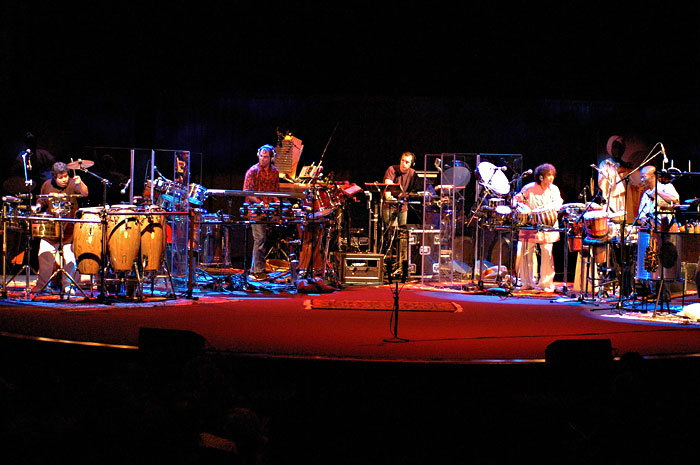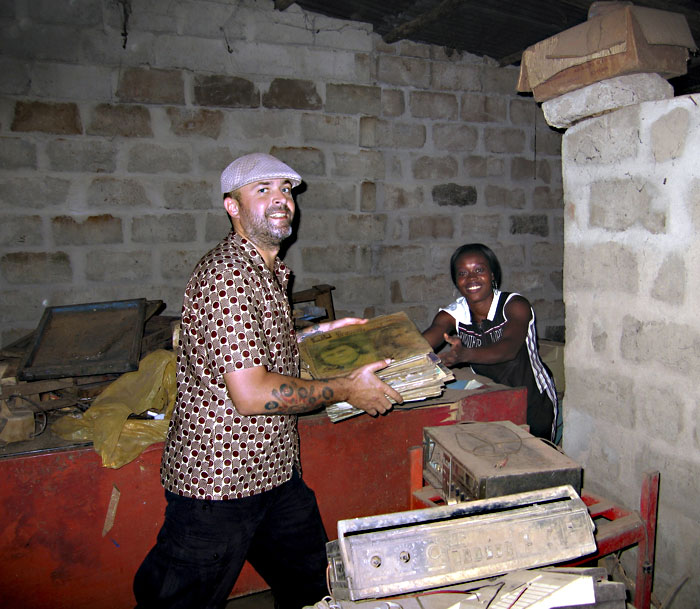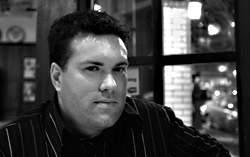Like Peter Gabriel or David Byrne, Mickey Hart is one of the most important contemporary figures to introduce non-American sounds to a wider American audience. Even if he didn’t play some of the world’s most evocative dual-drum solos with the world’s most psychedelic bluegrass band, the Grateful Dead, he’d still be changing the way we listen to rhythm.
Hart is currently on tour on with his Global Drum Project, a follow-up to his Grammy-winning, extremely lucrative 1991 album Planet Drum. Since that time, he’s written the opening-ceremony music for the ’96 Olympics and founded several other bands, including the Rhythm Devils with his former Dead co-drummer, Bill Kreutzman.
What characterizes all of Hart’s music (and books) since his Dead days is his constantly increasing interest in international styles of percussion. He often works with drumming masters from other musical cultures, and travels constantly, recording the environments around him as he goes. This interest has led to his work with the Library of Congress and the Smithsonian Institution on preserving so-called endangered musics, in which vinyl recordings are saved from organic deterioration through transfer to a digital format. The music is then returned to the cultures that produced it, some of whom have lost a connection to their musical heritage.
Coincidentally, when I called Hart, I happened to be renting a cabin about two miles down the road from his home in California: “A forest away from me,” as Hart puts it. There were a couple of construction workers around the cabin the day I called, and they seem to know Hart as a local. They pointed in the direction of his house and told me about the time Hart’s boa constrictor got loose from its cage and scared the neighbors.
Seattle Weekly: So this Global Drum Project is sort of a continuation of the ideas you worked with on Planet Drum?
Mickey Hart: It’s kind of the next incarnation of the adventure we call Planet Drum. It’s mutated into the four of us [Hart plus Zakir Hussain, Sikiru Adepoju, and Giovanni Hidalgo] and a computer technician. We’re trying to create new kinds of percussive space and different zones and using digital technology in an inventive way of making noise. This Global Drum project exists in both worlds: the acoustic world—real drumming on membranes—and then the world of binary sound.
Yeah, you’ve definitely moved in the modern direction of electronic music and sampling and looping. Do you still use your RAMU system?
I’m using an extension of that. RAMU stands for Random Access Musical Universe. It was a sound droid. It was like a Mack truck, and what I use now is like a Ferrari. But it’s just a database that lets you sample drums. The drum itself might sit on my shelf, but the sound travels with me wherever I go. I have sounds from the New Guinea rain forest or gamelan sounds from Bali or Kenya. It just allows for so many colors.
But you still use all sorts of bizarre acoustic instruments onstage. I saw a video of you playing on a tree trunk.
Oh, the redwood root! That was a root of an old-growth redwood. It was a stump. We had it miked and put some delay on it. That’s kind of a thing I do. It’s my hobby. I scavenge around for fallen pieces of wood with cavities and sonorous places. On that night [that the video was shot], Zakir played the redwood and I played an old-growth grapevine. So even though they’re dead, these things still live and come alive in a whole ‘nother way.
And then you use some other unusual electronic instruments onstage, such as the transistor radio.
Yeah, I use shortwave or AM/FM and I just tune into wherever I am and I process that signal. I use a Kaoss generator and I create sounds that are yet to be born. So that’s done in real time, as opposed to prerecorded effects.
It’s like a form of improvisation with the constant stream of radio information.
It’s found material. It’s found art. I’m scanning the radio on stage. I’ll pull up a Chinese radio station or maybe something from Siberia or some beautiful political commentator railing against the right or left. Or I’ll get the Chipmunks. And all that keeps me in the moment. I’m creating real art rather than something that’s coming out of a can.
And you do this both on recordings and onstage?
Of course! Everything I’m doing now in recordings I try to do live. Over the last few years, I’ve tried to take all these special processing techniques that I normally just use in the studio and turn them into something modular, something I can do onstage. And sometimes I’ll add field recordings to the whole thing. That’s the fun of all this. It’s turning into a creature and I just keep refining it. You don’t know where it’s going.
Where do these field recordings come from?
I went to Thailand not so long ago—that was my last big trip—and I recorded the environment, the music, whatever interests me. It’s like how some people like to look at snapshots on a trip—I always have a sonic scrapbook. Last year I went to Mumbai and recorded the sounds of celebration in the streets on New Year’s Eve and the sounds of tiger camps.
Can you talk a little about your work at the Smithsonian?
The Endangered Music Project is drawn from a whole bunch of different collections. One of them is from pre–World War II Bali. Next month, and this isn’t really related, [we’re working on] the world peace chants from Gyotu monks. I’ve recorded them a few times, but this one is a 100-person choir, unlike anything people hear in the West.
The topic of chant reminds me of something I’ve heard you mention many times before: the rhythmic trance, which you always describe as one of your goals, both as a musician and person.
That’s a good question. You know, it’s like meditation for me. It keeps me healthy, keeps my blood moving. It keeps my mind and body connected. Now a lot of it has to do with exercise besides drumming, since I don’t drum all day anymore. But I do rhythmic exercises. Or I’ll ride my bicycle or jog or do yoga. And I’m always doing a mental training in rhythmic cycles, like a mantra. But I also do this in my car.
You know when you get into the zone? Well that’s definitely a shallow version of what I’d call a deep rhythmic trance. When you miss an exit or something like that—obviously the car is not the best time to do this—when you start to drift and think of other things, you have to be aware of your surroundings. But now I take time away from things to do this. It’s a way of life for me. I don’t consciously think about this kind of thing anymore. You can’t just make it happen, though, even when you’re playing. You don’t have to take all the drugs or bend yourself out of shape or drum for nine hours to get there. It’s just a mental state these days.








